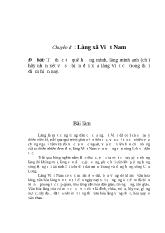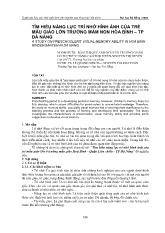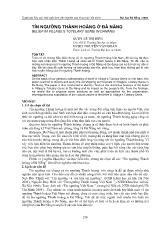Luận án Learner autonomy: The roles of teachers and peers
- Người chia sẻ : vtlong
- Số trang : 305 trang
- Lượt xem : 14
- Lượt tải : 500
Các file đính kèm theo tài liệu này
 luan_an_learner_autonomy_the_roles_of_teachers_and_peers.pdf
luan_an_learner_autonomy_the_roles_of_teachers_and_peers.pdf
- Tất cả luận văn được sưu tầm từ nhiều nguồn, chúng tôi không chịu trách nhiệm bản quyền nếu bạn sử dụng vào mục đích thương mại
Bạn đang xem trước 20 trang tài liệu Luận án Learner autonomy: The roles of teachers and peers, để xem tài liệu hoàn chỉnh bạn click vào nút DOWNLOAD LUẬN VĂN ở trên
Regarding areas of control, there are three main models of learner autonomy.
The first is Littlewood’s three-aspect model of learner autonomy (1997). The model
includes language acquisition, learning approach, and personal development. In the area
of language acquisition, learner autonomy is “the ability to operate independently with
the language and use it to communicate personal meanings in real, unpredictable
situations” (“autonomy as a communicator”). In the area of classroom organization,
learner autonomy involves the “ability to take responsibility for their learning and to
apply active, personally relevant strategies” (“autonomy as a learner”). In the broadest
dimension, learner autonomy is “a higher-level goal of greater generalized autonomy as
individuals” (“autonomy as a person”) (Littlewood, 1997, p.81).
Macaro (1997) develops the second model and consists of three dimensions:
autonomy of language competence, autonomy of language learning competence, and
autonomy of choice and action. The first dimension refers to communicative ability after
mastering second language rules at a certain level. The second one refers to the ability
to reproduce the language skills gained and transfer them to other similar situations. The
third one refers to the ability to decide about learning options, such as short-term and
long-term objectives and preferred personal learning strategies. It also includes
performing higher-order thinking skills in the target language, such as constructing
argumentative essays and providing justifications for a particular matter.
Benson (2001) describes the capacity of an autonomous learner to control three
dimensions of learning: learning management, cognitive processes, and learning
content. Learning management is the student’s capacity to control learning behaviour,
emphasizing skills and strategies in the self-study process. The cognitive processes
concern the psychology of learning, referring to the learners’ internal mental capacities,
attitudes, and readiness that enable the learner to take responsibility for his/her learning.
The control of learning content is a learner’s capacity to control the learning situations
and their right to do so. The development of control in one dimension can support the
performance of the others. Effective control over learning content can lead to positive
attitudes and appropriate learning strategies. The level of cognitive awareness of
learning promotes the level of control over the learning management process. The three
dimensions, learning situations, learning behaviour, and psychology of learning, are
renamed as situational dimension, behavioural dimension, and psychological
dimension, respectively (Ding & Shen, 2022).



